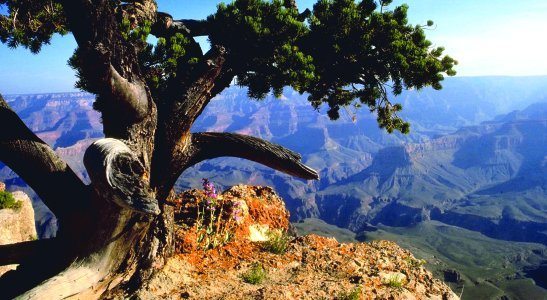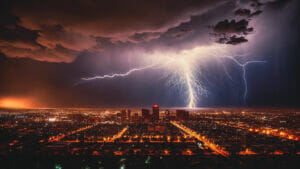U.S. District Judge David Campbell late yesterday denied a uranium industry motion to overturn the Obama administration’s ban on new uranium mining on 1 million acres near the Grand Canyon. The ban was adopted January 2012 to protect the Grand Canyon’s watersheds. The withdrawal prohibits new mining claims and development on old claims that lack “valid existing rights” to mine.
“It’s a great day for the Grand Canyon, and for rivers, wildlife, and communities across the West,” said Ted Zukoski of Earthjustice, one the attorneys representing conservation groups and the Havasupai tribe in the case. “The uranium industry was hoping to cripple the Interior Department’s ability to temporarily protect lands from destructive mining. Today’s opinion upholds the Interior Department’s authority to take such protective measures.”
The National Mining Association, Nuclear Energy Institute, Northwest Mining Association and others last year filed four lawsuits challenging the withdrawal and the underlying federal authority to enact any withdrawals larger than 5,000 acres. The Havasupai tribe and conservation groups intervened to uphold both.
“Today’s decision upheld the government’s important role in preventing private profiteers from poisoning public lands under the authority of an antiquated mining law,” said Grand Canyon Trust’s Roger Clark. “We look forward to the court’s upholding of other federal responsibilities to protect the Grand Canyon.”
Judge Campbell denied industry’s motion to overturn the withdrawal and the underlying federal authority to enact withdrawals larger than 5,000 acres. The industry groups had claimed that the presence of an unconstitutional legislative veto in the subsection that contains the Interior Secretary’s authority to withdraw land parcels larger than 5,000 acres means that the Interior Secretary had no authority at all to withdraw such lands. The judge ruled — as the government, Havasupai tribe and conservation groups had argued — that the unconstitutional veto provision could be “severed” from the law without affecting the Grand Canyon’s watershed withdrawal or the Interior Department’s general authority to protect such lands.
“Today’s ruling protects not only the Grand Canyon’s watershed, but millions of acres of other public land that have been withdrawn to protect natural values from destructive mining,” said Taylor McKinnon with the Center for Biological Diversity. “By upholding the federal withdrawal authority, today’s ruling is good news for public lands, water and wildlife.”
If successful, the uranium industry’s argument would have eliminated the Interior Secretary’s authority to protect large tracts of public lands from mining. Over the last five years, the secretary has used his authority to “withdraw” areas greater than 5,000 acres for up to 20 years to protect lands all across the West. Examples include nearly a half-million acres within national wildlife refuges; habitat for desert tortoises and pronghorns as well as archeological treasures in Nevada; habitat protecting the largest wintering Rocky Mountain bighorn sheep herd in North America (on Wyoming’s Whiskey Mountain); recreational areas in Washington and Wyoming; forests in Oregon; and special features like the Bonneville Salt Flats in Utah.
“Currently, there are limited tools to protect sensitive public lands and wildlife from harmful uranium mining — this is one of them,” said Sandy Bahr, director of the Sierra Club’s Grand Canyon Chapter. “Today’s decision will mean the Grand Canyon watershed and other withdrawn lands throughout the West will continue to be protected from new mining claims.”
The court’s decision does not end the four industry lawsuits challenging the Grand Canyon mineral withdrawal decision. Industry can still raise arguments that Interior Secretary Salazar failed to properly consider environmental and economic impacts of the withdrawal. Those issues are likely to be briefed this spring.




